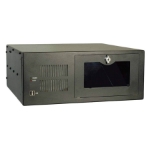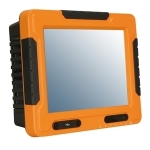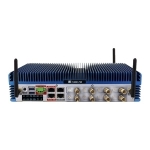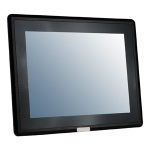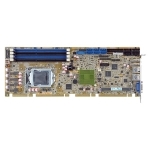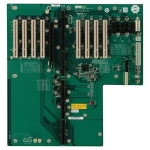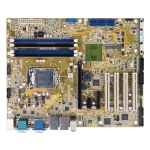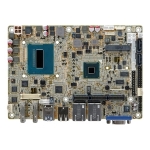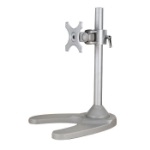Manufacturers stipulate testing methodologies for both enterprise class hard drives and desktop class hard drives. They state the enterprise drives are tested using enterprise conditions and must operate in 24 x 7 environments, and the desktop drives are tested using a typical 40-hour work week conditions. We wish to share some of the salient technical features that effect both drives and why careful attention needs to given to these attributes.
Error Recovery Time limits
Modern hard drives feature an ability to recover from some read/write errors by internally remapping sectors and other forms of self test and recovery. The process for this can sometimes take several seconds or (under heavy usage) minutes, during which time the drive is unresponsive. RAID controllers are designed to recognize a drive which does not respond within a few seconds, and mark it as unreliable, indicating that it should be withdrawn from use and the array rebuilt from parity data. This is a long process, degrades performance, and if a second drive should fail under the resulting additional workload, it can be catastrophic.
Enterprise drives have this value set at around ~ 7-8 seconds, after which time if the disk is has not recovered from the error it issues an error message to the RAID controller and defers the error recovery until a later time. This will let the RAID controller decide on how to handle the recovery issue.
By contrast the Standard (Desktop) Drives have this feature turned off as it is assumed that there is no RAID card. During its recovery process the disk becomes non-responsive and it will not issue any type of error message. At this point he RAID controller will issue instructions to mark the drive as bad and proceeds to remove it from the RAID array. Desktop drive firmware is designed with the assumption that there is no RAID controller present and for the drive to do everything possible to complete the error correction cycle.
Rotational Vibration Tolerance
One of the greatest hindrances to hard disk performance and reliability is vibration. Much like a needled on a record, the disk drives head must try to follow narrow data tracks in order to read (or write) information. Physical disturbances can throw the head off-track and cause a delay while the actuator repositions it. This eventually has an impact on the hard drive’s input/output Performance.
In modern, balanced hard drives, linear back-and-forth vibration barely affects the operation of the drive head. However, circular movements—rotational vibration—can cause serious disruption. These problems are particularly acute in multi-drive systems (NAS, DAS), because drives tend to be installed alongside each other in arrays. The vibration caused by the rotation and seek activities of nearby drives can affect the whole array, progressively disturbing the operation of each drive in the system.
The main sources of Rotational Vibration (RV) energy are: 1) the drive’s self-actuation, 2) additional drives inside the cabinet accessing data, and, 3) external forces acting on the cabinet. If RV is not taken into account in the design of the drive, the force of RV can push the head off track causing missed revolutions and delays in data transfers. Tests on drives not capable of handling RV have shown significant reductions (over 50%) in performance.
Most enterprise class RAID drives combat vibration-induced performance degradation with sensors that allow the drives to tolerate a larger rotational vibration window. These sensors allow the drives to compensate for the rotational vibrations by using a closed feedback loop between the head and the spindle. It can sense vibration anomalies and adjust the drive head accordingly.
Enterprise class drives usually have more servo wedges in the disks tracks then compared to desktop drives. These wedges are used to determine the location of the head in relation to the track. If a head misalignment is detected it will suspend the read or write and wait for the target location to come under the head again. Enterprise drives use dedicated servo and data path processors along with servo algorithms in the drives firmware to help with this compensation.
Desktop class drives on the other hand are designed not to have to deal with so many vibrations issues, and as such this means they don’t have sophisticated mechanisms to compensate for vibration induced errors. Desktop class drives usually have less servo wedges and only one combined servo and data path processor with no firmware compensation algorithms. This means they are more susceptible to rotational vibration errors.
Without these vibration sensors, extra servo wedges, dedicated servo and data path processors, and compensation algorithms, you will likely see symptoms of vibration related errors including lower drive performance, a larger number of medium errors, and an increased frequency of drives marked offline by the RAID controller.
Error Correction – Data Integrity
One feature of an enterprise-class system is the implementation of “end-to-end” error detection. Enterprise class drives use ECC for data passing through drive memory and may use additional error detection methods for data transmitted within the drive electronics. Data that is transmitted from one end of the drive to the other with this system would be accompanied by some type of parity or checksum at every stage. This will allow for data transmission errors to be detected, and in some cases corrected or retransmitted. The form of this error detection and correction capability is usually proprietary to the drive vendor.
Desktop class drives deployed within subsystems do have error detection, but do not usually support end-to-end data protection that the Enterprise class drives implement. The reason for this is the lack of Error Correction Code (ECC) within the system memory or drive memory buffers.
Quality Differences
More often than not manufacturers may discuss the quality of the parts used in the manufacturing of both class of drives, manufactures may differentiate enterprise from desktop drives by not testing certain enterprise-class features, validate drives with different test criteria, or even disable enterprise features in desktop class drives to ensure differentials for pricing and marketing purposes. Aside from the main differences already outlined, we have not been able to distinguish the differences on a component level despite having physically dismantled both class drives and extensively compared the two, aside from the firmware differences. All other variances are a subject of this report. The only product that bucks this trend is the Seagate Constellation SATA drives that are designed form the ground up and use components that are not comparable to any of the desktop class drives we looked at (all 2TB drives).
As hard drive technologies keep evolving; customers continue to have a choice of products to use for their storage requirements. It is important to balance the critical nature of your data with hard drive features and system requirements to ensure these adequately meet with your specific needs to store, protect and share your data. Selecting the correct drive class will enable the critical areas of qualities, functionally, performance, and most of all reliability to be optimized for the targeted implementation.

